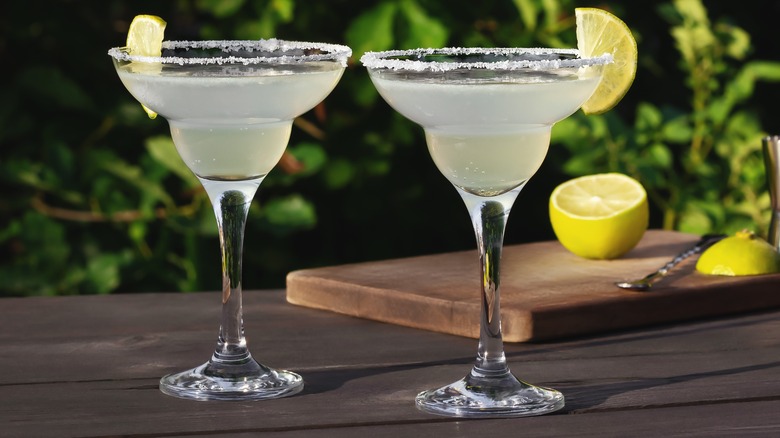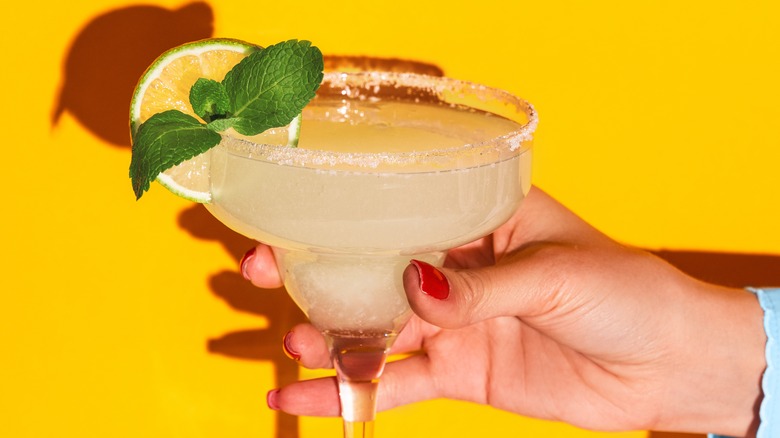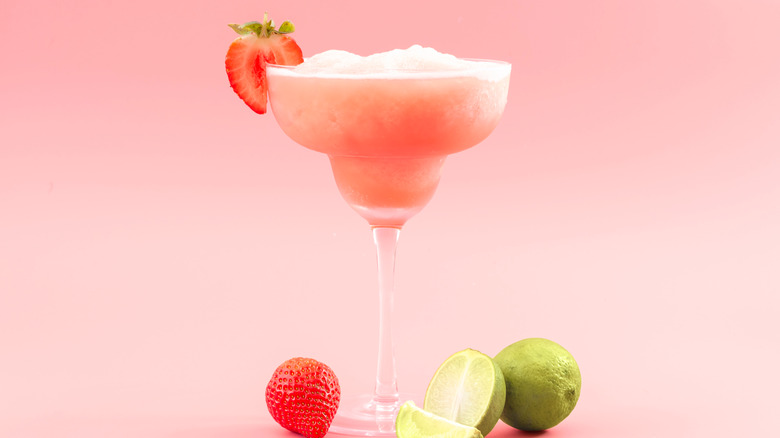Is Margarita Burn A Real Thing?
Whether you are a Jimmy Buffett fan or not, Margaritaville might hold some appeal. There is something about the idea of lying on the beach as warm ocean breezes caress your skin, while you sip on an ice-cold margarita. Doesn't that just scream relaxation? Who wouldn't trade their nine-to-five for a few days lounging with a salt-rimmed glass full of tequila, triple sec, and lime juice in hand?
Despite that dreamy feeling, not everything is roses and sunshine — not even in what we think of as paradise. Even life's simplest pleasures can have drawbacks as one popular TikTok Influencer discovered the hard way after a recent trip to Montauk.
The user took to TikTok to share a detailed video about her unpleasant experience with a margarita, the sun, and a skin reaction. The video has since garnered over a million views and 5,000 shares with users repriting similar stories. One shared, "THIS HAPPENED TO ME! I got it all over my stomach... Don't drink too much citrus while in the sun."
If you're asking if "margarita burn" is real and whether or not you should be concerned about it, we have some information that can help.
What is margarita burn?
According to Medical News Today, what we call margarita burn, doctors call Phytophotodermatitis, and the explanation we need for what it means lies in the name.
Phyto comes to us from the Greek word for "plants." Photo means "light," and dermatitis refers to any inflammation of the skin. Combine them as scientists do, and you get inflammation caused by sunlight and plants.
Prevention Magazine offers more detail from Dr. Joshua Zeichner, MD at Mount Sinai Hospital. He explains that citrus plants, such as limes, contain the chemical compound furocoumarins, which undergo a chemical reaction when exposed to UV rays from sunlight. Dr. Zeichner goes on to explain this "severe chemical reaction in the presence of sunlight," acts as an irritant that causes cell death in afflicted areas. While people's reactions to exposure can vary greatly, in worst-case scenarios, you can suffer pain, burning sensations, redness, and skin blistering.
Is margarita burn a real thing? indeed, it is painfully real.
Should you be concerned about margarita burn
As Dr. Zeichner notes in his Prevention interview, people's susceptibility to Phytophotodermatitis varies greatly. The Journal of Dermatological Research states that most cases are minor and only evidenced by reddening of the skin. The skin reaction usually begins within 24 hours and peaks within 48. Doctors consider severe cases rare, though exact numbers are difficult to establish due to misdiagnoses.
Luckily, there is much you can do to avoid developing margarita burn. If you are drinking margaritas, keep your mouth and hands clean. A paper from the Journal of the American Board of Family Medicine suggests the simple preventive measure of washing any areas exposed to these chemicals as soon as possible. So keep your wet wipes handy.
Medical News Today offers up several suggestions, including avoiding overexposure to sunlight. We know that's not ideal on a beach trip. But, they go on to suggest applying sunscreen frequently to minimize the penetration of UV rays. This is good advice whether you are exposed to furocoumarins or not.
If you are prone to this condition, try to avoid re-exposure. This could mean staying out of the sun and laying off the citrus cocktails. Perhaps go for a strawberry daiquiri instead of a margarita.


